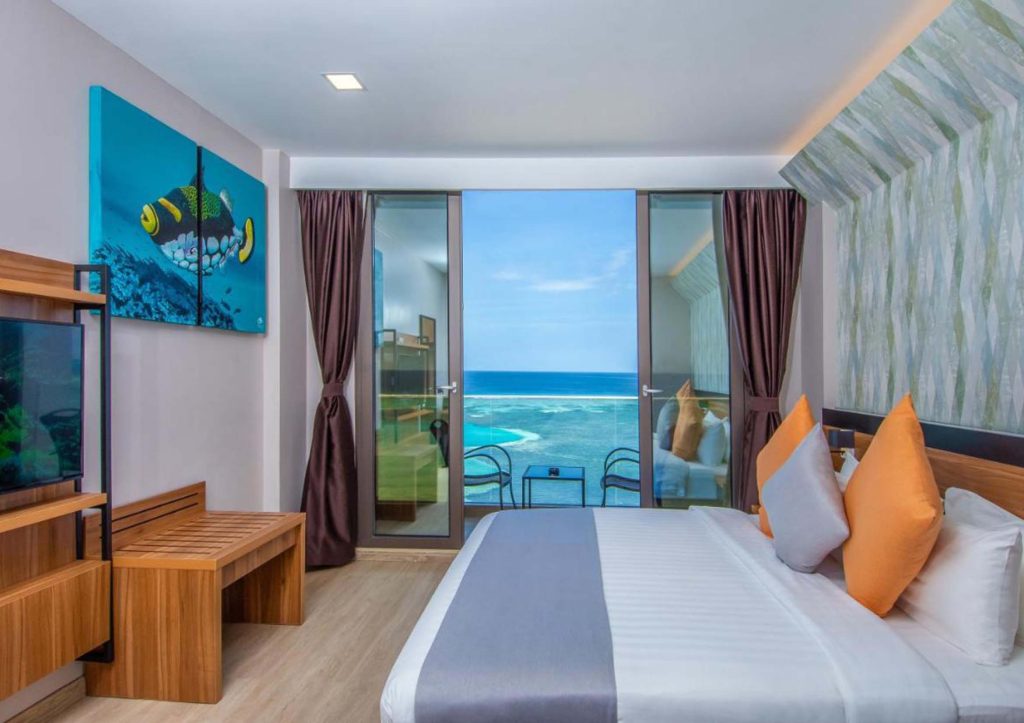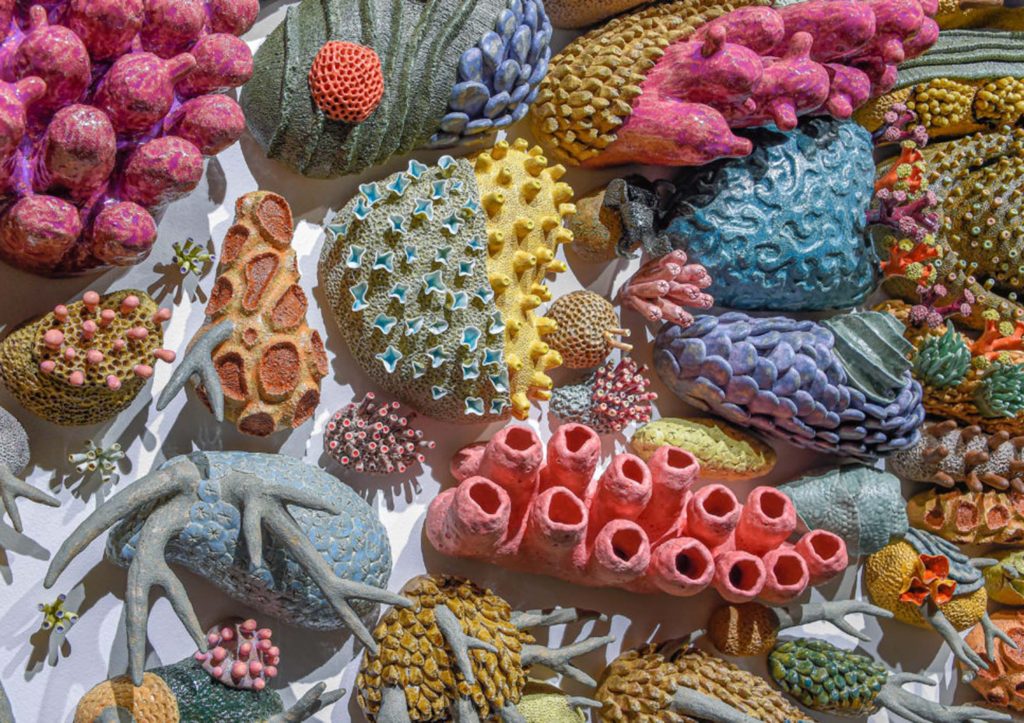Embarking on our Maldivian adventure, my husband and I found ourselves drawn to more than just the sun-kissed beaches and overwater bungalows. We yearned for a deeper connection with the local culture, and what better way to achieve this than to delve into the heart of Maldivian markets? The bustling capital of Malé was our starting point, promising a kaleidoscope of colors, aromas, and the promise of unique finds.
Malé Local Market: A Cultural Odyssey
Our anticipation surged as we stepped into the heart of Malé’s local market, a vibrant tapestry of colors, scents, and cultural treasures. The market, a sensory symphony, beckoned us with stalls adorned in a kaleidoscope of hues and the enticing aroma of Maldivian spices.
The dhivehi raanu, handwoven mats that adorned many stalls, immediately drew us into the rich tapestry of Maldivian craftsmanship. Each mat seemed to tell a story, a testament to the skill passed down through generations. The intricate patterns spoke of the island’s cultural heritage, and we couldn’t help but feel a deep connection with the Maldivian way of life.
Our journey through the market became more than a mere shopping expedition; it evolved into a cultural odyssey. Local artisans showcased delicate lacquerware, their intricate carvings and designs revealing a narrative deeply rooted in the island’s seafaring past. It was a visual feast, with every wooden artifact whispering tales of maritime adventures and the resilience of a people intertwined with the ocean.

Amidst the lively ambiance, vendors became storytellers, breathing life into each item on display. Our attention was captivated by the Odi Fai, a wooden pole adorned with intricate carvings—a symbol of the ancient art of hand-line fishing. It wasn’t just a tool; it was a piece of art encapsulating the spirit of the Maldivian people and their profound connection with the sea. The vendor’s animated tales transformed a functional item into a living artifact, and we left with not just a wooden pole but a piece of Maldivian history.
Navigating the bustling market, we found ourselves engulfed in a sensory symphony. The vibrant colors of tropical fruits, neatly arranged in picturesque displays, were a visual delight. The aroma of freshly ground spices permeated the air, creating a fragrant trail that led us from one enchanting stall to another. The market’s beating heart was the locals, engaged in spirited bargaining for their daily groceries. The lively banter and camaraderie were infectious, pulling us into the daily rhythm of Maldivian life.
As we immersed ourselves in this bustling cultural haven, it became evident that the market wasn’t just a place to buy goods; it was a living, breathing entity that encapsulated the essence of Maldivian identity. Each stall, each piece of craftsmanship, and every interaction with the vibrant locals added layers to our understanding of this island nation.
The dhivehi raanu, with its intricate weaves, found its place as a cherished memento—a tangible reminder of the market’s vibrant energy and the warmth of the Maldivian people. The lacquerware, carefully chosen, became more than decor; it became a vessel for Maldivian stories to resonate in our daily lives. And the Odi Fai, standing tall in our living room, became a symbol of our journey into the heart of Maldivian culture.
In essence, Malé’s local market wasn’t just a marketplace; it was a cultural haven where every item had a story, and every transaction was a dance of tradition and modernity. As we departed, our bags laden with cultural riches, we carried not just artifacts but a piece of Maldivian spirit—an indelible mark of our cultural odyssey in the heart of Malé.
Thulhaadhoo Island: A Coral Symphony Unveiled

Our journey into the cultural heart of the Maldives brought us to Thulhaadhoo Island, a hidden gem renowned for its exquisite coral stone craftsmanship. The narrow lanes, lined with modest workshops, hinted at the artistic treasures awaiting discovery. As we strolled through this coral haven, we found ourselves immersed in a world where tradition and artistry converged.
The artisans of Thulhaadhoo, masters of their craft, were engrossed in the delicate process of transforming raw coral into captivating works of art. Jewelry, decorative items, and intricate sculptures emerged from their skilled hands, each piece a testament to the island’s rich cultural heritage.
Among the treasures that caught our eye was a small coral sculpture depicting a traditional Maldivian boat. The level of detail was nothing short of astonishing, with the delicate features of the boat and the craftsmanship mirroring the island’s deep connection with the sea. This wasn’t just a souvenir; it was a tangible piece of the island’s history, a miniature masterpiece that encapsulated the essence of Maldivian seafaring traditions.
What set Thulhaadhoo apart was the opportunity to witness the coral crafters in action. The workshops, though unassuming in appearance, housed a hive of creativity and skill. The rhythmic sound of their tools meeting the coral blocks echoed through the air, creating a melody that seemed to harmonize with the nearby ocean waves. It was a sensory symphony, the salty breeze carrying the essence of the sea, mingling with the artistry that unfolded before our eyes.
As we observed, it became evident that coral craftsmanship was not merely a skill; it was a labor of love, a tradition passed down through generations. The artisans, with weathered hands and focused expressions, transformed rough coral into pieces of art that would travel far beyond Thulhaadhoo’s shores.
Engaging with the crafters added a layer of depth to our experience. They shared stories of their families, the evolution of their craft, and the challenges they faced in preserving a tradition so deeply ingrained in their identity. It wasn’t just about creating beautiful objects; it was about preserving a cultural legacy and ensuring that the art of coral craftsmanship continued to thrive in the face of modernity.
Our visit to Thulhaadhoo was more than a cultural excursion; it was a journey into the soul of Maldivian artistry. The coral sculptures we acquired weren’t just inanimate objects; they became storytellers, narrating the island’s seafaring history and the resilience of its people. Each piece, with its unique charm, found a place in our collection, becoming a tangible reminder of the artisans’ dedication and the cultural richness of Thulhaadhoo.

In the embrace of Thulhaadhoo’s coral symphony, we didn’t just witness craftsmanship; we became part of a narrative that transcended time. As we left the island, our hearts and bags heavier with coral treasures, we carried not just artifacts but a piece of Thulhaadhoo’s artistic soul—a cherished memento of our cultural immersion in the heart of the Maldives.
Maafushi Island: Bridging Tradition and Modernity
Maafushi Island, with its blend of traditional and contemporary influences, offered a different shopping experience. The market here catered to diverse tastes, featuring everything from handmade jewelry to modern fashion. It was a testament to the Maldives’ ability to seamlessly blend tradition with the evolving preferences of a global audience.
In this vibrant marketplace, we stumbled upon a boutique specializing in handmade Maldivian jewelry. The intricate designs, inspired by the ocean’s waves and marine life, spoke to our love for unique and meaningful accessories. The fusion of tradition and modern aesthetics made it a perfect spot for those seeking a diverse range of cultural artifacts.
Choosing the Perfect Souvenir: Dhoni-shaped Keychains
Selecting the ideal souvenir became a personal journey, a task not to be taken lightly. In the Maldives, where the sea is a way of life, we found ourselves drawn to dhoni-shaped keychains. These miniature replicas of traditional Maldivian boats symbolized the island’s seafaring heritage and made for thoughtful gifts for friends—a tangible piece of the Maldives to carry back home.
As we perused the options, the intricate craftsmanship and the symbolism behind each piece became apparent. Each keychain was a work of art, reflecting the dedication of local artisans to preserve and share their cultural identity. The variety of designs, from brightly painted dhonis to intricately carved wooden replicas, provided a range of choices that allowed us to select souvenirs tailored to our preferences and the preferences of our loved ones back home.
Navigating the Markets: Tips for a Seamless Experience

While exploring these markets, we learned that embracing local customs and understanding the art of haggling added layers of authenticity to our experience. The cultural significance of certain items, especially those with religious or historical importance, meant we needed to be mindful of export restrictions.
Haggling, we found, was not merely a transaction but a cultural exchange. Engaging in friendly banter with the vendors allowed us to gain insights into the stories behind the items and the cultural significance attached to them. It became a dance of words and wits, a way to connect with the local community and share a moment of laughter amid the bargaining.
We quickly adapted to the local norm of cash transactions, as many smaller establishments operated on a cash-only basis. This simple adjustment ensured a stress-free shopping spree, allowing us to focus on the joy of discovering cultural gems.
Bags Full of Memories
As we boarded the seaplane, our bags laden with Maldivian treasures, we reflected on the weight of our acquisitions. It wasn’t just about the artifacts; it was about the cultural richness and the warmth of the people we encountered. Shopping in the Maldives was not a mere transaction; it was an immersion into a world where every piece told a story, and every market visit was a chance to create lasting memories.
The Odi Fai, the coral sculpture, and the dhoni-shaped keychains were not just souvenirs; they were tokens of a journey into the heart of the Maldives. Each piece, carefully selected and imbued with meaning, became a tangible reminder of the vibrant culture and the genuine hospitality that welcomed us at every market stall.
In the end, our bags were not just full of artifacts; they were laden with memories. Memories of the bustling markets, the friendly banter, and the moments of connection with the artisans who shared their craft with us. The Maldivian markets had become more than a shopping destination; they were portals to the soul of the Maldives, inviting us to unravel its cultural tapestry and carry a piece of it back to our homes.
So, fellow travelers, when in the Maldives, let the markets be your guide to a treasure trove of cultural riches, waiting to be discovered and cherished. Whether it’s a carved wooden masterpiece or a simple keychain, each item has a story to tell, and by bringing it into your life, you become a part of that narrative, weaving your own tale of adventure and cultural exploration in the heart of the Indian Ocean.




